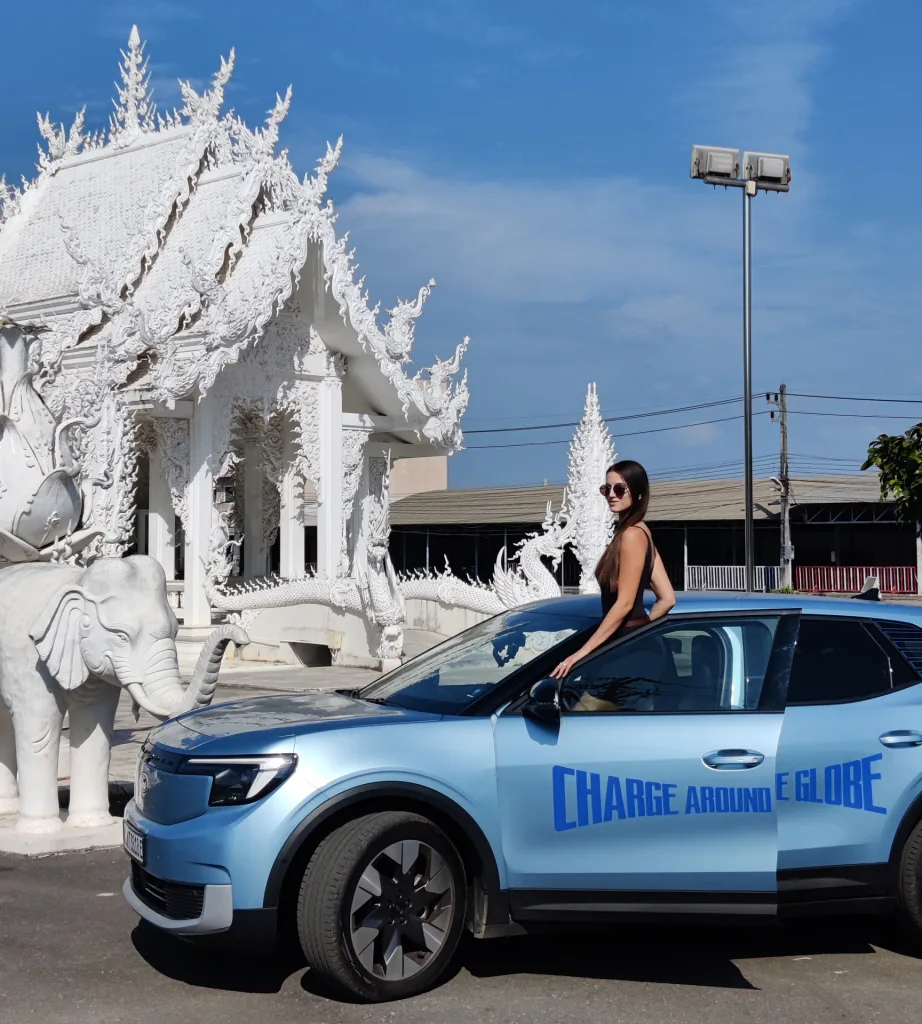Back in March, YouTuber Lexie Alford (aka “Lexie Limitless”) became the first person to drive around the world in an electric car. She drove across six continents, through 27 countries, clocking more than 30,000 km over the course of the six-month journey in a new electric Ford Explorer.
Now the adventure is premiering on Prime Video in the U.K., and YouTube elsewhere, as a three-part doc series called Charge Around The Globe. And the whole thing is a Ford ad.
“The brief was to find a story that ‘reinvented exploration’ in modern times in a new electric vehicle,” says Peter Zillig, Ford’s marketing director in Europe. “To find a story that only Ford could tell, that was unique and authentic, and would resonate with our target audience.”
Initially conceived by Ford’s previous agency, AMV BBDO, to promote the launch of the new EV Ford Explorer earlier this year, the new series is produced by ad agency Wieden+Kennedy (W+K), and its London-based in-house production studio WracK.
The inspiration for the series comes from 1922, when explorer Aloha Wanderwell became the first woman to drive around the world in a Model T. Here, Alford reinvents that journey for a new generation, while exploring the boundaries, resilience and potential of EV technology.
Alford starts episode one in Nice, France and goes to Mombasa, Kenya, while episodes two and three take her through Australia, Asia, the Americas, and Europe.

Entertainment over advertising
It’s not the first time a transnational journey has been used to hype EV use and investment. Apple’s 2020 series Long Way Up chronicled Ewan McGregor and Charley Boorman’s 21,000 km trip through South America on prototype Harley-Davidson Livewire EV motorbikes.
This also isn’t the first time Ford has used longer-form content as a significant marketing vehicle. Back in 2020, the brand teamed with Disney for the celebrated Bronco relaunch with three short films directed by Oscar winner Jimmy Chin.
W+K London creative director David Colman says a content series like Charge Around the Globe is the perfect vehicle for Ford’s goals because it connects with audiences on an emotional level, while demonstrating Ford’s commitment to EV technology in a compelling way. “Traditional ads are great, but a series allows us to explore how more traditional ad messages translate into real-world adventures and inspire a connection with the brand,” says Colman. “With a series, we can bring viewers along for the highs, the lows, the challenges, and the breakthroughs of a journey over 30,000 km, which simply can’t be replicated in a 30-second spot.”
It also requires not disappearing into the endless maw of streaming content choices. Here, Ford and W+K have crafted a long-running content flywheel around this series. The six-month production and trip also has Alford documenting her experiences on social media in real-time. The doc series is now the culmination.
“This holistic approach makes the investment highly efficient compared to a traditional multi-ad campaign, giving us a single, cohesive narrative that we could repurpose across multiple platforms,” says Colman. “The earned media and engagement generated through the documentary and related activations further amplified the value, delivering a return that a standard ad campaign simply couldn’t match.”

Driving EV adoption
It’s an interesting time for Ford to be investing in content to hype EVs. Last year, the company announced it was postponing around $12 billion in EV investment due to a slowdown in consumer demand. In July, the company scrapped plans for a $1.8 billion upgrade to turn its Oakville, ON, car plant into an EV factory.
Meanwhile, global sales of EVs (including fully electric or plug-in hybrid) grew 20% in the first half of 2024, with only 1% growth in Europe during the same period. That’s slower than analysts and manufacturers had expected, according to market research firm Rho Motion. The show, and even the trailer, doesn’t disguise the challenges in EV infrastructure, not shying away from showing Alford’s struggles to find a place to charge.
Zillig says that Ford sees its EV ambitions in a global context, and the series was conceived for the European market, which has a more mature EV adoption and infrastructure. Still, many people, there and in the North American market, are still not fully convinced of the capabilities of electric vehicles, with significant concerns remaining about range and charging options. “However, the reality is that the charging infrastructure in Europe is good overall, and the real-life range of EVs has significantly improved over the last couple of years,” says Zillig. “Charge Around The Globe is so important. We drove an electric vehicle around the world to show what is possible.”
Now the brand needs drivers to be as adventurous with their choice of car.